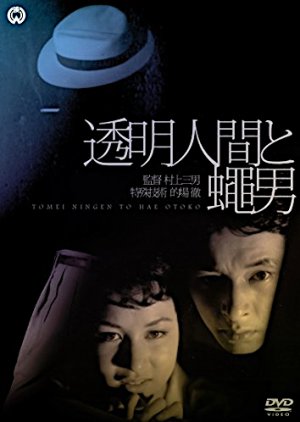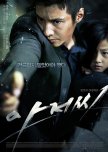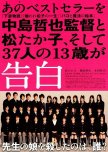
Invisibility is no longer in the realm of impossibility.
The third and final Invisible Man film created by the Japanese, The Invisible Man vs. The Human Fly acts as a standalone sequel of sorts to Daiei's The Invisible Man Appears but you wouldn't know that from watching the film since it doesn't even acknowledge the film that came before.A series of ghastly murders are being committed. The one similarity in each of the murders is that a weird buzzing sound is always heard right before the murder occurs. Is the killer invisible or possibly some other incredible creature?
Like many of the B-movie tokusatsu adventures that would follow, The Invisible Man vs. The Human Fly brings the wartime trauma to the fore, implying that this bodily corruption is an extension of the spiritual corruption suffered by those who lived through the conflict.
The Invisible Man Appears had opted to minimise the threat of violence to emphasise the immoral criminality of casual gangsterdom, thuggish armed robbery and the obscenity of fighting over a shiny diamond necklace when so many were going hungry, but Human Fly opens with a murder which turns out to be one of six recent mysterious cases of unexplained violent death. The only clue the police can come up with is a matchbook, later realising that some of the victims had served during the war together.
Where the Invisible Man in Daiei's first film is used as a warning about the misuse of science and the rising inequalities of the complicated post-war economy. By the 1950s, he'd become a more sympathetic figure. For Daiei, he was now a force of order, an unambiguously good instrument of law enforcement and a guardian of justice. For Toho, he was the melancholy ghost of the middle-aged man who'd been transformed by militarist folly, and like the 1949 Invisible Man knew he could never change back. The Human Fly, meanwhile, was everything that was rotten in the current society - embittered, greedy and vengeful, an example of bad science for which there was no legitimate application.
The impressive effects work of Eiji Tsuburaya has been abandoned and while Tōru Matoba attempts to do the ideas created by Eiji justice, his creativity is extremely limited by his choices of shots. Although the sequence of the railway and train exploding is a bright spot in an otherwise underwhelming effort. There's very little screentime dedicated to the titular characters and they are mostly relegated to background roles while a substandard police procedural plays out in the foreground.
Mitsuo Murayama's direction is fine, the story is fine, the characters are fine, it's just all a big bag of fine. It's not a film that is by any means special like the last two, just insanely forgettable. The actors don't really commit to the insane plot and ideas the film wants to portray and it mostly comes across as half-arsed in places.
Overall, The Invisible Man vs. The Human Fly is an entertaining if forgettable romp in the world of tokusatsu, you can do so much better but equally, you could do so much worse.
Esta resenha foi útil para você?






![Kaiju,Tokusatsu,Mecha,etc* [Multi-List]](https://i.mydramalist.com/aEgymt.jpg)
![Kaiju,Tokusatsu,Mecha,etc* [Multi-List]](https://i.mydramalist.com/Zbd0q_4t.jpg)
![Kaiju,Tokusatsu,Mecha,etc* [Multi-List]](https://i.mydramalist.com/YAZ2gt.jpg)
![Kaiju,Tokusatsu,Mecha,etc* [Multi-List]](https://i.mydramalist.com/9xYJyt.jpg)
![Kaiju,Tokusatsu,Mecha,etc* [Multi-List]](https://i.mydramalist.com/xbjEr_4t.jpg)








